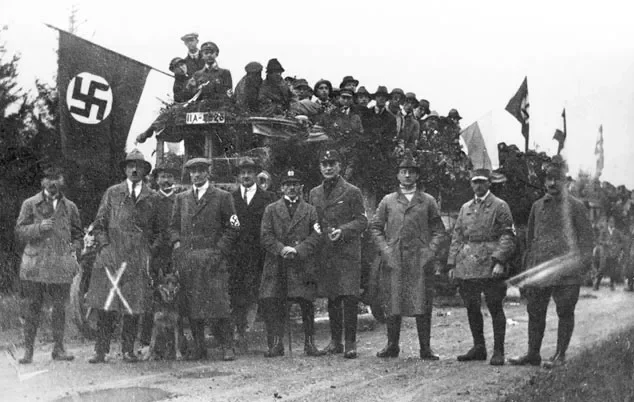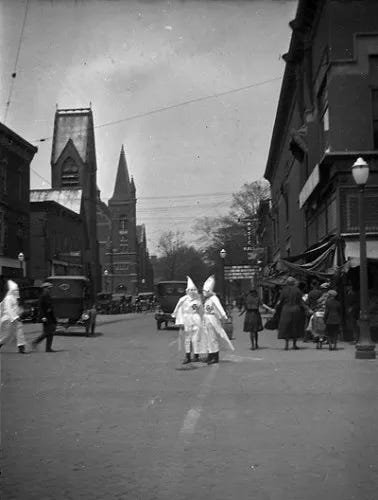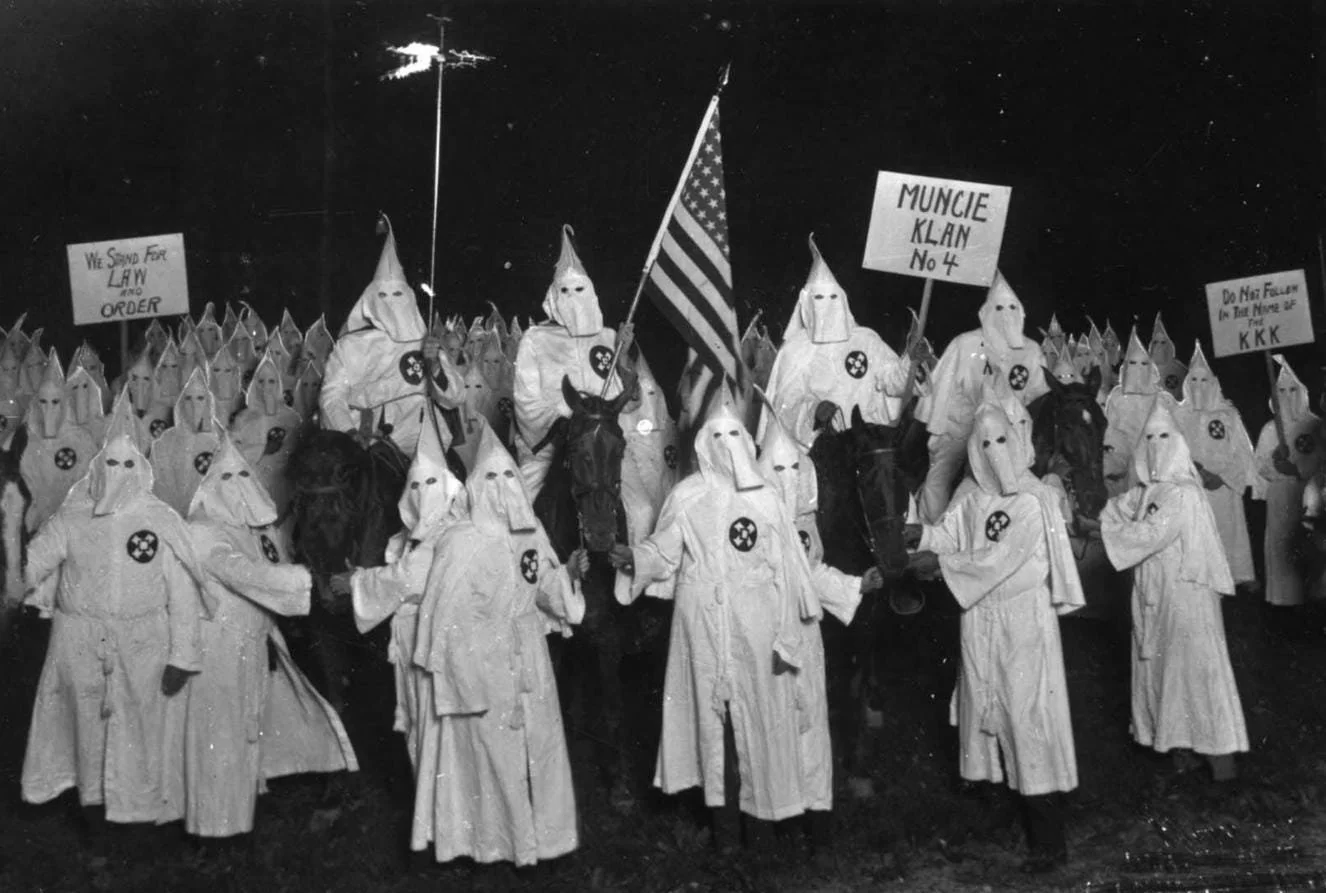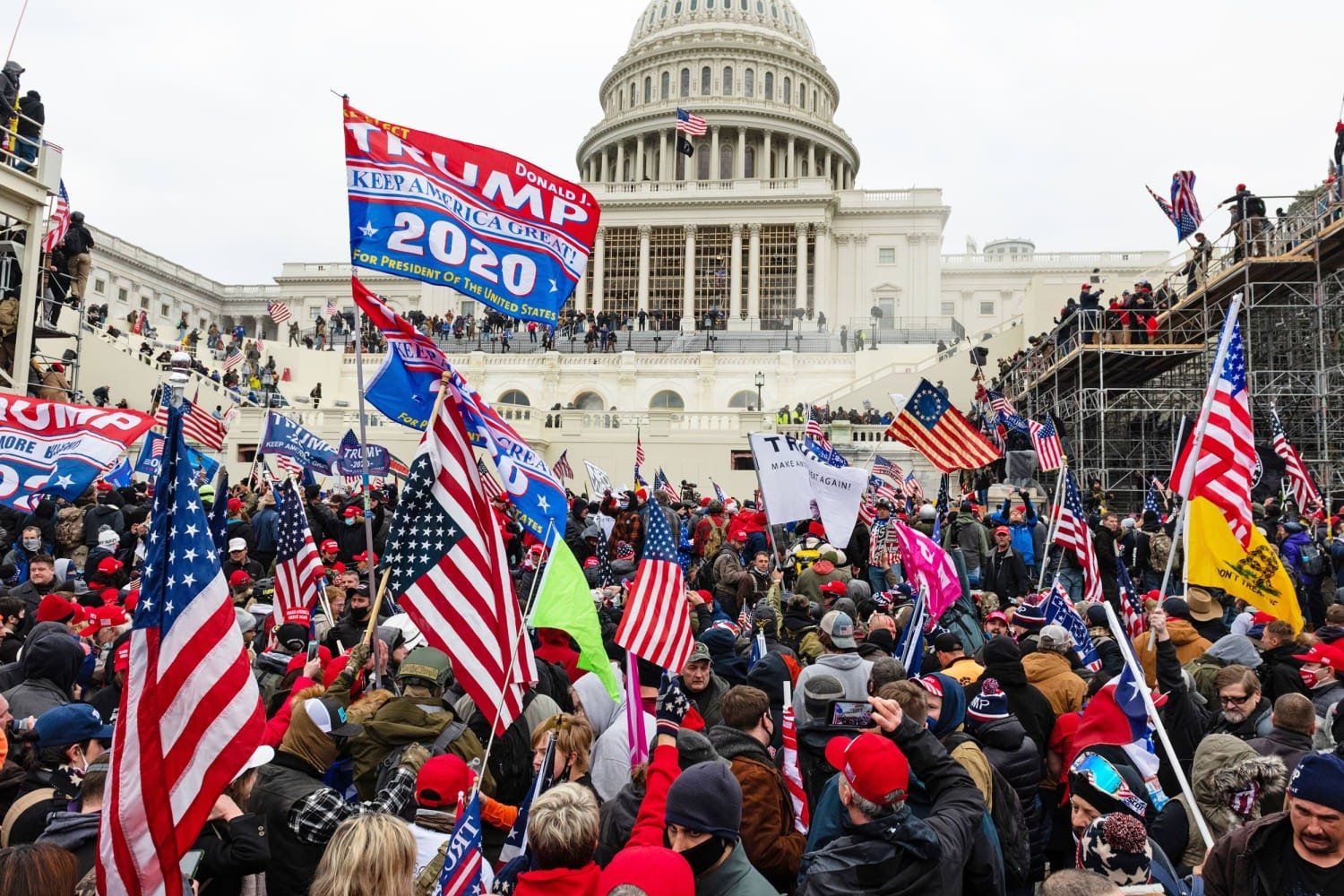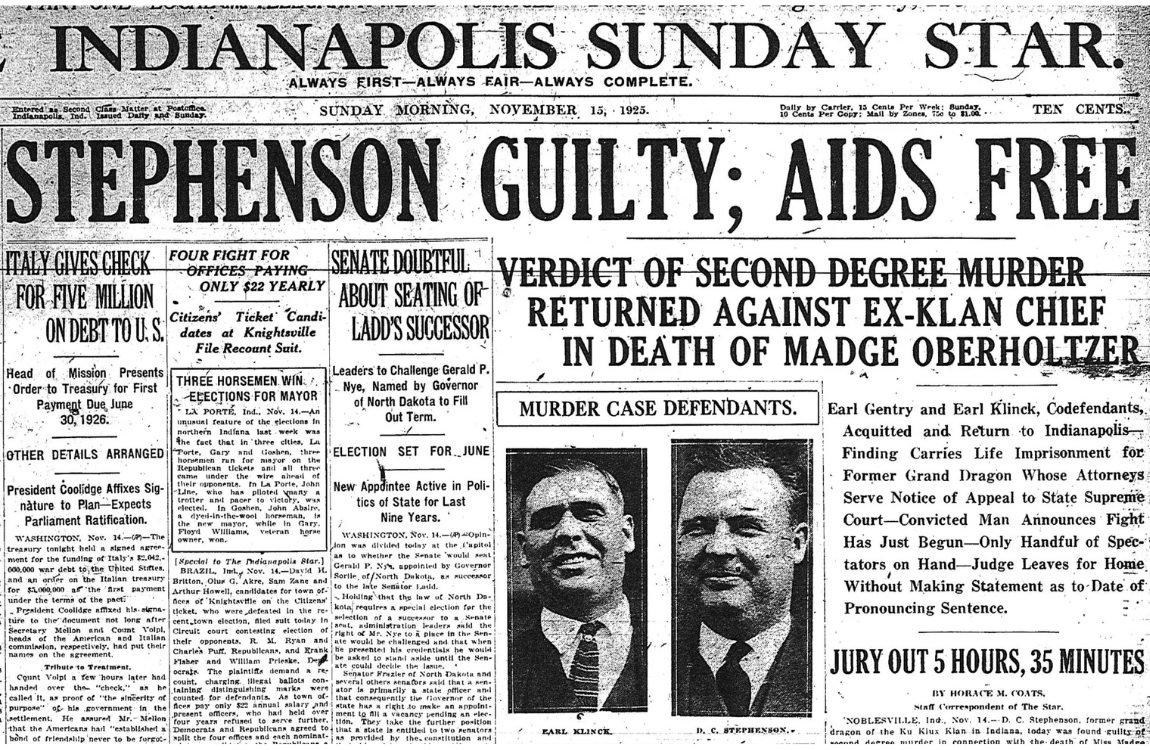I've been thinking about the history of authoritarianism in America that we don't talk about.
Nazi Party members on their way to the “German Day” in Coburg in October 1922. Hitler is second from the left. Photo credit: Bavarian State Library
The rise of white Christian Nationalism in our country has prompted no shortage of comparisons to historical analogues. Although the most obvious example is Nazism in Germany in the 1920s and 1930s, similar movements have risen in Hungary under Victor Orbán and in Turkey under Recep Tayyiip Erdoğan. These dictatorships have erased in their countries many of the post-World War Two advances in democracy.
But we don’t need to look abroad to find predecessors to our current American moment. At the same time the Nazis were emerging in Germany, an autocratic, destructive organization sharing many of the same values and tactics was terrorizing communities here at home.
BECOME A FREE SUBSCRIBER TO I’VE BEEN THINKING
The story of the Ku Klux Klan’s white Christian nationalism and its brutal impact on American culture is the subject of Timothy Egan’s remarkable 2023 book, A FEVER IN THE HEARTLAND. The story centers on Indiana and Ohio in the early twentieth century, two of the midwestern states often characterized today as “the real America,” home to “real Americans.”
I encountered Fever in a reading group with close friends who were born and raised in Indiana. Like so many of us, they’d never heard of the KKK’s midwestern rampage through the early decades of the last century, though it took place in the cities and small towns where they were raised. A conspiracy of silence kept the Klan out of family stories, and out of our commonly-told American narrative.
In reading about the conditions on the ground in 1920s Indiana and Ohio, I came to realize that the long, sordid tradition of American white supremacy has always been with us. Though I had always understood the Klan to have been widespread in the south, it was alive and well in the Midwest, with strong movements also in Oregon, California, Colorado and other non-southern states. In reading Egan’s account, I was surprised by the stark parallels between this specific moment in the 1920s and 30s and today.
One of the clearest similarities was the role of a charismatic, autocratic leader who openly peddled a rhetoric of fear. In the 1920s, the surge of Klan membership and the expansion of its programs were led by a man named D. C. Stephenson who became the very successful head of recruiting in midwestern states. By 1922, Indiana had the country’s largest and most visible KKK organization.
D.C. Stephenson, photographed at the height of his power (Indy Star File Photo)
In the course of his work, Stephenson amassed a personal fortune via fraudulent schemes and intimidation, using this money to buy the loyalty of Indiana leaders in politics, private industry, judicial systems, and Protestant churches. His vision of the world was built on hate, and his path to power was built on those who enthusiastically bought into his white supremacy as well as those whom he could press or purchase into compliance. An explicitly horrible person, he presided over politics in Indiana and into Ohio for a decade, despite common knowledge that he was vulgar, abusive, dishonest, and a frequent and unrepentant criminal.
Learning about Stephenson’s reign of terror, it’s impossible not to see in it preludes to Donald Trump and his program to Make America Great Again. White Christian men are the bedrock of both movements, and they make their political case by creating fear about the so-called Replacement Theory, the belief that white Christian men are being replaced by people of color, immigrants, women, LGBTQ folks, and even white Christians who disagree with them. It’s as if the Klan is America’s MAGA before Donald Trump, whose faith and politics mimic so many of the KKK’s convictions.
The racial animus of both groups is also tied inextricably to a religious set of justifications. In my opinion, both the Klan of 1920s Indiana and the MAGA movement more than a century later adhere to a version of Christianity that’s very different from the faith in Jesus that animates my life. The Klan’s God is one of vengeance and domination: they demonized Jews and Roman Catholics, and wreaked violence on those whose Christian beliefs differed from and challenged their faith. The Protestant ministers who led most of the Midwest’s churches adopted Klan convictions.
Klan members on Franklin Street in Valparaiso, Indiana, circa 1923 (via Ancestry.com)
Contemporary Christian nationalism thrives in the same ethos of violence and domination. In the name of God, MAGA elevates white males to the top of the human pyramid and exercises their power against people of color, non-Christians, women, LGBTQ people, and immigrants. Their followers enthusiastically reinforce this hierarchy, while their targets live in fear of being indicted, jailed, or deported.
Following remarks from Charlie Kirk’s widow at his memorial service, in which she forgave the man who killed her husband, Donald Trump followed her, saying, “I hate my opponents, and I don’t want the best for them.” Wrapping hate and violence in the language of Christianity seems, to me, not just inconsistent but profoundly offensive and wrong.
The similarities between MAGA and the Klan are not merely ideological, but extend to tactical, on the ground efforts to move the levers of power. The KKK governed the voting system in Indiana and Ohio. They selected candidates, raised funds to support their campaigns, controlled access to voting sites, and counted the votes. They intimidated those who ran against their candidates (and few took on that task), threatening and exacting severe reprisals to those who campaigned against their candidates.
A Ku Klux Klan gathering in Muncie, Indiana in 1922
MAGA has severely compromised every American citizen’s right to vote. Like political parties before them, they have bought into the value of gerrymandering, drawing the boundaries of congressional districts to ensure that a majority supports their party’s candidates. Worse, they cling to the false narrative that mass illegal voting is ongoing, despite any evidence to support those claims. They persist in this belief even though during his first term Trump disbanded a special task force he created to examine this corruption when they wound up finding none. And ultimately, elections that do not go their way are met with violence and insurrection, as on January 6th.
MAGA’s goal is clearly to delegitimize the core of our democratic system, the right of every eligible person to vote. They create and perpetuate the lie about voter fraud, intensify gerrymandering, make it more difficult to vote, especially for marginalized voters, and challenge any voting results that go against them with their repetitive cry to STOP THE STEAL as well as the ever-present specter of political violence.
Demonstrators try to enter the Capitol during the protest in Washington on Jan. 6, 2021. (Eric Lee / Bloomberg via Getty Images)
Since Stephenson’s Klan controlled the political and judicial apparatus in his states, the criminal justice system did not care about due process in dealing with criminal behavior. For many years, Stephenson himself was never indicted for the multitude of crimes he committed, including intimidation, fraud, and murder. He was the law, and his cronies followed his lead in the sham justice system he controlled.
On January 23, 2016, Donald Trump claimed he could stand in the middle of Fifth Avenue and shoot somebody and not lose any voters. There were clear hints of his willingness to condone violence during his first term, but in this second term he has broadened and intensified official violence by cementing control over the formerly independent FBI, the Department of Justice, the Department of Homeland Security, and a court system presided over by judges he has appointed. Trump, like Stephenson, behaves as if he is the law.
W.E.B. DuBois in 1918
In a 1926 edition of North American Review, in an article titled “The Shape of Fear”, the Black American sociologist and historian W.E.B. DuBois was wrestling with the question of how this Klan outbreak of white Christian nationalism had risen. He wrote,
“Where did all of this come from? What had calloused the character of so many... What did they want? [Behind the] yelling, cruel-eyed demons who break, destroy, maim...is a knot, large or small, of normal human beings, and these human beings at heart are desperately afraid of something.”
MAGA is terrified of sharing or losing their power, of course, but it feels like the core MAGA fear is even more basic: it’s the fear of difference, fear of the Other, fear of people not like us. MAGA’s leaders, beginning with Trump but spread through MAGA talking heads and media outlets, ignite this fear daily and allow it to incinerate facts and convictions that challenge their basic beliefs.
One of the themes in A Fever in the Heartland that translates for me into hope in our current circumstances is that D.C. Stephenson and his evil empire were left in ruins not by power brokers or opposition politicians, but by regular people: an unmarried woman in her late twenties whom Stephenson raped and brutalized so severely that she died after a thirty-day fight for her life, a young and early-career lawyer known around the courts as the boy prosecutor, and a jury of twelve middle-aged farmers. These were all ordinary people who had seen enough and suffered enough and were mad enough to risk being David to this fraudulent Goliath. Their collective courage and persistence brought down the vulgar, violent head of the northern KKK and precipitated what became the radical decline of the pre-MAGA Klan throughout the country. Perhaps it will be such ordinary Americans today who have had enough of this vulgar, violent reign to dare to slay the monster.

